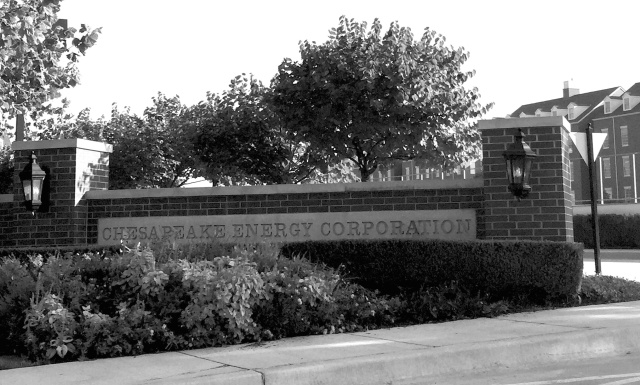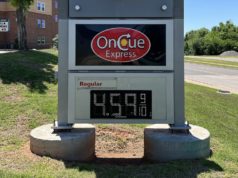

Chesapeake Energy Corp. reportedly laid off hundreds of employees Tuesday, another wound in Oklahoma’s festering oil and gas economy.
Those included in the latest round of oil layoffs — 740 total people, 562 of whom are in Oklahoma City — join the ranks of many other energy-industry workers who have either received walking papers, severance agreements or buyout offers.
“A lot of employers do want to give folks some money so they’ve got it in their pocket and they have a little financial security as they move on to the next phase of their life,” said Allen Hutson, a senior associate in law firm Crowe & Dunlevy’s labor and employment group.
OKC-based Kimray has offered all 700 of its employees a buyout, according to NewsOK.com, and the equipment-manufacturing company’s CEO has announced his retirement. His son will take over the position.
In Duncan, Halliburton has also laid off employees, though the multinational corporate giant has not released a specific number, according to the Duncan Banner. In addition, Houston-based ConocoPhillips has announced it will lay off 1,800 employees company-wide, which will almost certainly affect people in Bartlesville.
These companies and many others have seen their stock values plunge over the past nine months, mostly in conjunction with the price for a barrel of crude oil. With oil prices falling below $50 per barrel, the revenue stagnation has forced companies’ hands.
“So much of our economy and workforce is driven by the oil and gas industry. Unfortunately, this is nothing new to the employers or the employees,” said Hutson, a native of Marlow. “You talk to employees who have been in the oil and gas business for 30 or 40 years, you’re not going to meet one who hasn’t been laid off at some point in their life.”
With so many Oklahomans entering — or anticipating — unemployment, Hutson spoke about how Oklahoma’s unemployment insurance system works in conjunction with severance packages or buyouts. In litigation or administrative challenges, his firm only represents employers.
“Assuming you meet all other criteria for receiving unemployment benefits — meaning you’ve worked for the company for so long, you are actively seeking new employment and any other conditions that apply to receiving unemployment — receiving a severance package or benefit would not preclude you from filing for unemployment and or receiving it,” Hutson said. “However, whatever you receive as a severance benefit would be subtracted from the amount of unemployment you are entitled to receive.
The calculations of exactly what a bought-out employee could receive in unemployment benefits are complex, the OCU Law School graduate said.
“You don’t get to double dip,” he summarized.
Early Tuesday morning, KFOR cited an unnamed source who said laid-off Chesapeake employees would receive a “generous” severance. Amid the staff turnover, the highly leveraged company’s stock rose $0.08 to finish Tuesday at $6.79 per share. On Valentine’s Day 2015, shares stood above $21.
As the story of Chesapeake’s attrition unfolded, NewsOK’s Adam Wilmoth reported just how “generous” Chesapeake’s severance packages were.
“Affected employees will receive 13 to 52 weeks of pay, depending on their age, pay level and years of service with the company,” NewsOK’s story stated. “They also will receive continuing health insurance and job placement help.”
Meanwhile, Kimray’s buyout offers come seven months after local media praised their “history of planning ahead” to avoid layoffs. For the past few months, the company had been paying for some idle employees to work weeks at local nonprofits.
Hutson said companies pay federal unemployment tax that ends up being managed by state agencies, such as the Oklahoma Employment Security Commission.
“The policy behind it is, we (as a nation) don’t want folks who can’t pay their bills or can’t take care of their families following their separation from employment,” he said. “Every employer pays a certain percentage into this fund based on a number of factors. The more unemployment claims they have, the higher that rate is going to be.”
In August, Oklahoma’s non-farm employment numbers fell by 3,600 jobs, raising the state’s unemployment rate to 4.6 percent, the highest it’s been since September 2014.
“I think people sometimes don’t realize how hard terminating folks is on employers,” Hutson said. “Nobody likes to experience termination, but at the end of the day, everybody is kind of looking for the same goal. With the economy the way it is, this is sort of the nature of the beast.”
(Editor’s Note: This story was updated at 10:30 p.m., Tuesday, Sept. 29, to include reference to additional reporting from local media.)
(Bonus Link: In a move that might elicit a variety of emotions, major retailer Target announced a plan earlier this month to replace some workers with robots.)




















